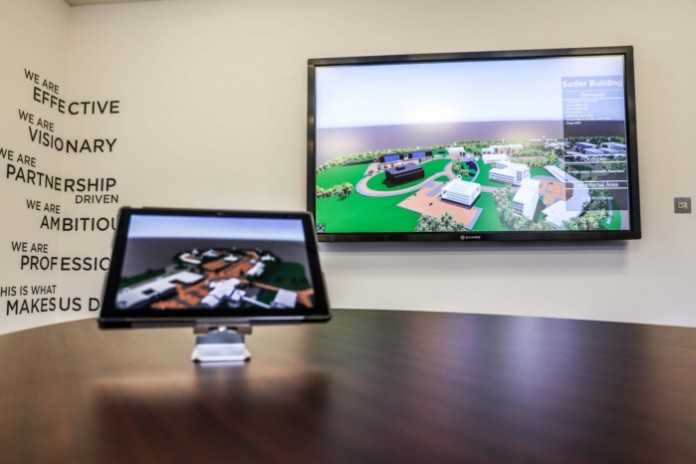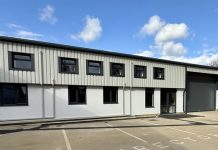The Oxford Science Park is the first science, technology and business park to use the ground-breaking geomatics and simulation technology, that is used by Formula 1® teams and automotive equipment manufacturers, to visualise the Park and its new Schrodinger Building, in 3D Apps. The Park, which is home to more than 2,500 people across 70 companies, used the technology to create an interactive 3D Park plan.
The Park instructed Severn Partnership, a Shropshire-based geomatics land surveying company, which drove around the site using the Leica Geosystems Pegasus Two vehicle mounted ‘reality capture’ kit, plotting one million 3D points a second, linked to GPS coordinates in real time and aided by a missile guidance inertial navigation system.
Conventionally, the 3D data would remain within technical, architectural or CAD software and be archived once used for planning and design. However, looking to push the technology further, the 3D Park plan was then converted into an interactive 3D visualisation by Seeable, a technical visualisation studio also based in Shropshire. The Schrödinger Building was then 3D visualised using the same state of the art game engine technology.
Dr Nigel Moore, director, Seeable Ltd explained: “As a hub for technical innovation and scientific research, it was a natural choice for The Oxford Science Park to use cutting edge survey and visualisation techniques to update the current Park plan.
“What would usually take a survey team weeks to complete with conventional equipment was completed within two days on-site using the latest high accuracy mobile mapping techniques from geomatics experts. Having mapped the Science Park in record time, the scan data was used as the accurate base readings to create a 3D Park plan. This base model then provided the platform to accurately visualise new proposed buildings in 3D, giving a virtual reality style experience.”
The 3D technology allows users to have a bird’s eye view of the Park, with contextual information added to each building. 360 degree panoramic images were also embedded into the visualisation App to merge the virtual with the actual ‘street view’ type perspective of key locations. Users are also able to ‘walk through’ The Schrodinger Building, experiencing the finished building before it is completed.
Piers Scrimshaw-Wright, managing director, The Oxford Science Park said: “We wanted to be able to showcase the Park and The Schrödinger Building both in our Marketing Suite here at The Oxford Science Park and also when out of the office using a tablet. This flexibility has already proved invaluable.
“We have a strong ethos of discovery and innovation across the Park, and it was a natural decision to invest in cutting edge technology to help market the Park and its new development phase. Businesses are increasingly familiar with virtual reality and we felt it important to embrace this technology to give our varied stakeholders a visual medium that makes orientation around the Park easy, and to accurately represent our new Schrödinger Building before it is built.
“Our development plans are ambitious, and it is only right that we have used state of the art technology to bring our plans to life, and portray a high level vision for the Park. The visualisations produced by the Severn Partnership and Seeable are simply brilliant.”
With the Internet of things (IoT) a hot topic for technology advancements, the 3D Park plan is the first of a new breed of visualisation Apps which can be expanded to visualise data just like smart city projects.
Dr Nigel Moore concluded: “In the future, buildings and sites will create IoT data for everything from energy use to bus timetables, parking spaces or electric vehicle charging locations. A crystal ball prediction or science fiction becoming science fact? Either way, The Oxford Science Park is riding the wave of technological advance and future proofing itself en-route.”






















